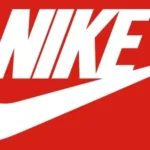Honda India offers authorized dealership opportunities—both two‑wheeler and car retail—rather than traditional small-scale franchising. Prospective partners must invest heavily to meet corporate standards and sustain service operations.

Dealership Formats & Facility Requirements
Two main types of Honda dealerships exist:
- Motorcycle & Scooter Dealership
- Car Dealership (4S / 3S) featuring showrooms, service centers, spare parts, and sales operations.
Typical space & facility requirements:
- Motorcycle: 1,200–3,000 sq ft showroom aligned with service bays and parts storage.
- Car: Minimum 2,500–4,500 sq ft showroom plus service area, with total built-up often above 10,000 sq ft including workshop and yard.
| Dealership Type | Investment Range | Commission to Dealer | Break-even Timeline | Space Requirement |
| Two-Wheeler Dealer | ₹80 lakh – ₹1.4 crore | ~85%–90% | 1–2 years | 1,200–3,000 sq ft |
| Car Dealership (4S) | ₹5 – 7 crore | ~90%–95% | 2–3 years | 2,500–4,500 sq ft + shop |
Investment Breakdown: Motorcycle vs Car Dealership
🏍️ Motorcycle Dealership (Honda Two-Wheeler)
- Franchise Fee: ₹40 lakh approximate
- Infrastructure Setup: ₹40 lakh – ₹1 crore
- Total Initial Investment: ₹80 lakh – ₹1.4 crore (including showroom fit-out, initial stock, working capital)
- Commission: Dealer retains about 85%–90% of revenues; brand retains ~10%–15% royalty.
- Break‑Even: Typically 12–24 months.
🚗 Car Dealership (Honda Cars India)
- Franchise Fee: ₹20–30 lakh one-time
- Infrastructure & Interiors: ₹4–5 crore for showroom, workshop, parts counter, customer lounge.
- Initial Inventory, Parts & Working Capital: Additional ₹1–2 crore.
- Total Investment: ₹5–7 crore.
- Commission Structure: Franchisee retains 90%–95% revenue; Honda keeps 5%–10%.
- ROI Horizon: 24–36 months under strong operations.
- Supporting Investments: Honda is concurrently investing ₹250–270 crore (with dealer partners) to modernize ~350–400 showrooms by 2025. Upgrade cost per facility ranges ₹60 lakh–₹1.10 crore
Eligibility & Application Process
To qualify, candidates must:
- Demonstrate strong financial capability—net worth aligned with investment size (₹1–3 crore for two-wheelers; ≥₹5–10 crore for cars).
- Secure or lease showroom premises (1,200–4,500 sq ft for bikes; 2,500–4,500 sq ft plus service area for cars).
- Ideally have automotive or retail experience.
- Commit to active operational oversight and brand compliance.
- Submit applications via Honda’s official framework; site evaluation and multi-step vetting follow
Revenue Streams & Profit Dynamics
Dealership income stems from:
- New vehicle sales—margins around 3–5% per unit (especially cars).
- Service & Spare Parts—margins around 15–25%, with recurring revenue from after‑sales.
- Insurance & Finance Commissions—additional incremental revenue.
Total net profit margin averages around 5%–10%, depending on sales mix and location. High-selling locations often yield annual revenue ₹20 crore and up.
Service & Spare Parts Pricing:
Honda’s OEM parts are moderately priced—about 15% higher than Maruti’s—which customers find burdensome.
Service labor costs, especially for bikes, typically range ₹1,500–4,600 per visit depending on service interval.
✅ Final Verdict: Is a Honda Franchise a Viable Opportunity?
Yes—with significant capital, automotive competency, and location strength.
🚀 Pros:
- Respected brand with strong market share in both two-wheelers and cars.
- Diversified income streams: vehicle sales, service, parts, finance commissions.
- Comprehensive dealer support and modernizing retail experience.
⚠️ Challenges:
- High entry investment—₹80 lakh to ₹7 crore depending on format.
- Thin margins on vehicle sales; profitability driven by after-sales and parts.
- Reputation risk from customer dissatisfaction and dealership practices.
- Ongoing capital push from Honda for facility upgrades.
Recommended Steps for Prospective Franchisees
- Visit functioning Honda outlets to assess sales and service crowd, customer satisfaction, and operations.
- Create detailed financial models including conservative sales, staffing, rent, and royalty scenarios.
- Contact existing dealers to understand operational realities and margin flows.
- Initiate formal inquiry via Honda’s dealership channel—request franchise disclosure and support documentation.
In summary, a Honda dealership can be a well-structured business with scalable returns—appropriate for serious investors ready to meet brand standards and deliver on service quality. However, success hinges on strong location choice, disciplined execution, and customer-centric service to mitigate potential operational pitfalls.


